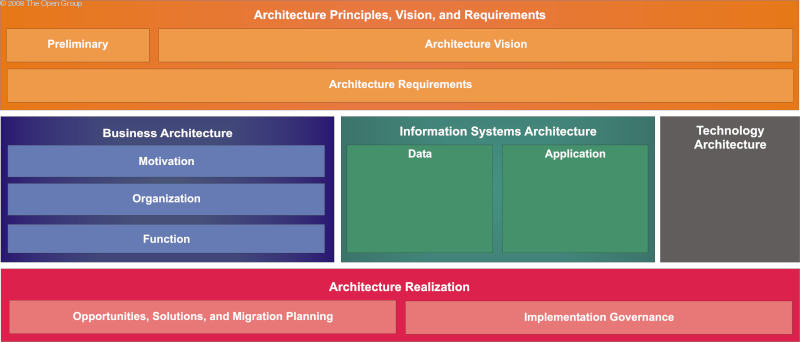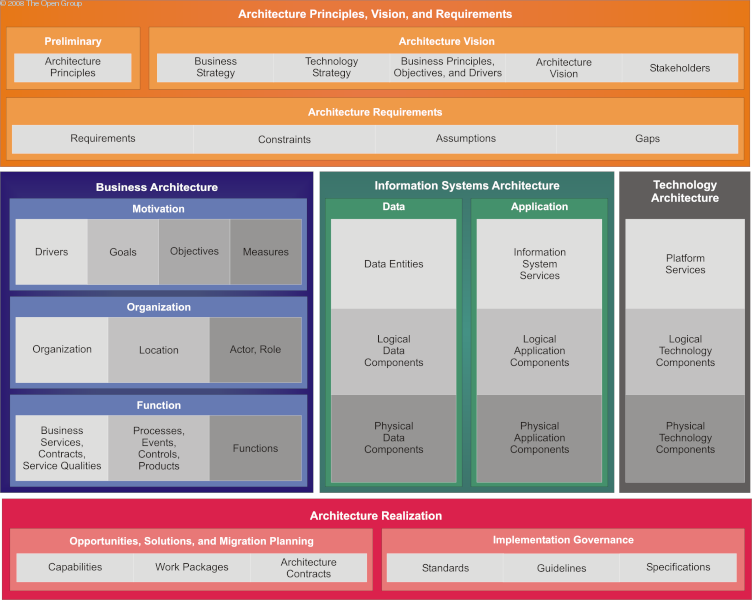| Overview of Content Metamodel | |
|
|
| Related Elements |
|---|
Overview of the Content MetamodelThe content metamodel defines a set of entities that allow architectural concepts to be captured, stored, filtered, queried, and represented in a way that supports consistency, completeness, and traceability. At the highest level, the content framework is divided up in line with the TOGAF ADM phases, as shown in Content Framework by ADM Phases . 
A more detailed representation of the content metamodel is shown in Detailed Representation of the Content Metamodel . 
|
The Open Group gratefully acknowledge Capgemini for the creation of the Eclipse Process Framework Method Plugin for TOGAF9. Downloads of the TOGAF documentation, are available under license from the TOGAF information web site. The license is free to any organization wishing to use TOGAF entirely for internal purposes (for example, to develop an information system architecture for use within that organization). A book is also available (in hardcopy and pdf) from The Open Group Bookstore as document G091.
Copyright © 1999-2009 The Open Group, All Rights Reserved |